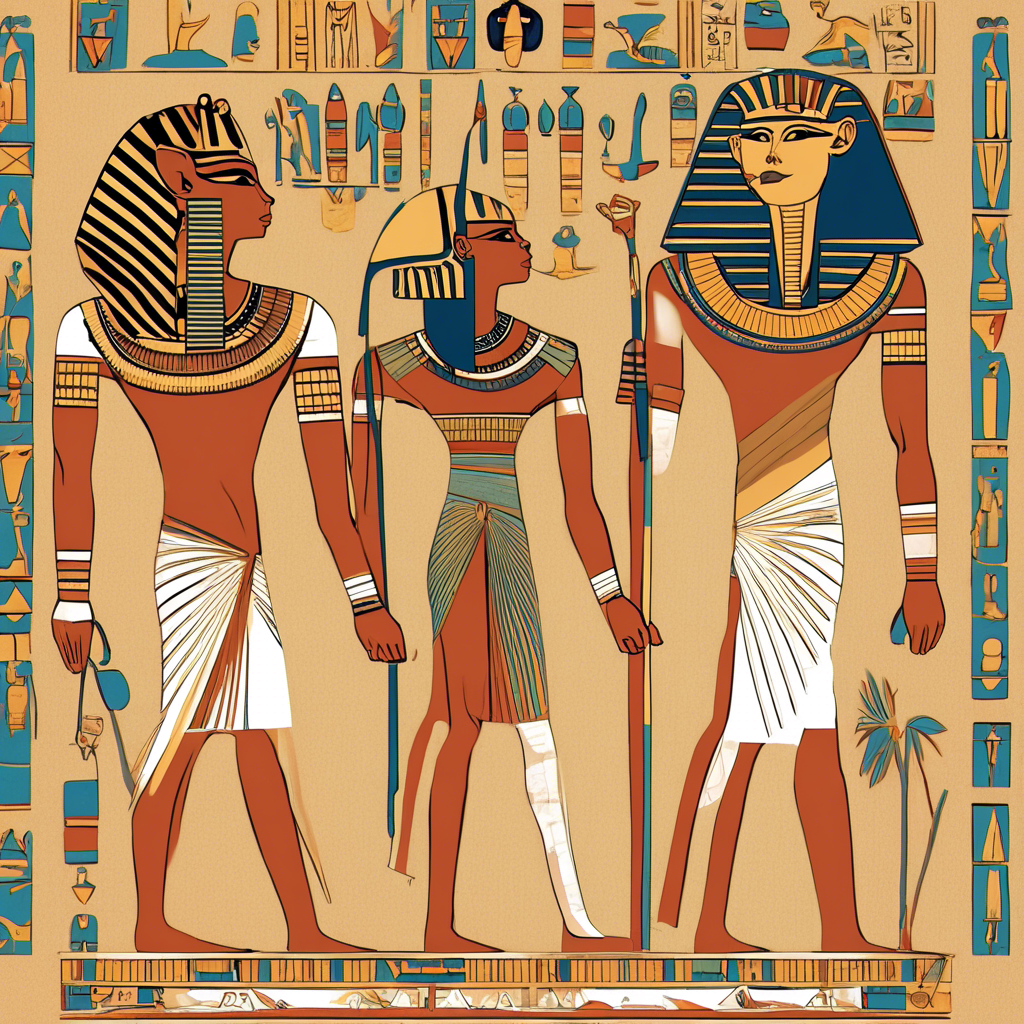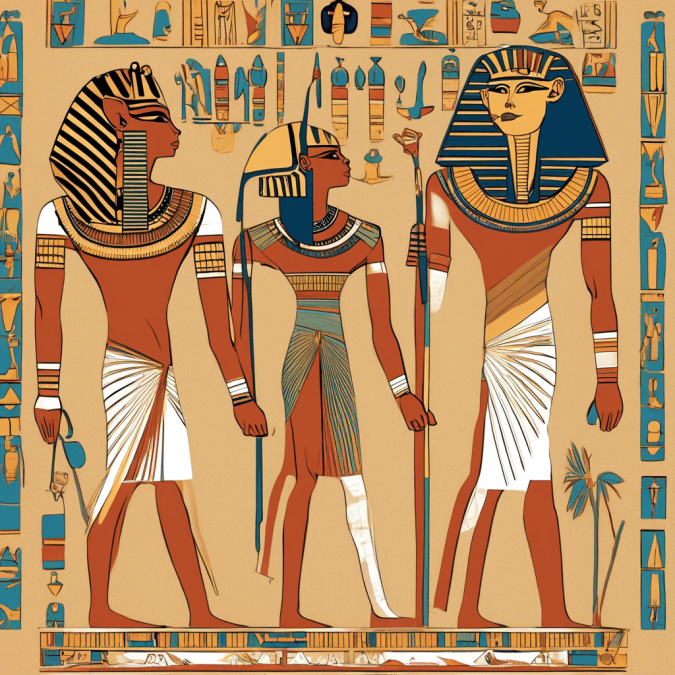
1. Introduction
Egypt, the land of pharaohs, pyramids, and timeless mysteries, holds a rich history that spans millennia. From the majestic monuments of Ancient Egypt to the modern bustling streets of Cairo, the country has witnessed the rise and fall of civilizations, conquests, and cultural exchanges. This project aims to delve into the depths of Egypt’s history, exploring the significant events, rulers, and societal changes that have shaped the nation over the centuries.
Overview of the Project
The project “Exploring Egypt: A Comprehensive History from Ancient Times to the Present” is a detailed examination of Egypt’s historical timeline, from the early dynastic period to the contemporary era. By dissecting key periods and transitions in Egypt’s history, this project seeks to provide a holistic understanding of the country’s evolution and the factors that have influenced its development.
Importance of Studying Egypt’s History
Studying Egypt’s history is crucial for understanding the roots of human civilization, the evolution of art and architecture, and the impact of cultural exchanges on societal norms. Egypt’s history also offers valuable insights into governance, religion, and societal structures that have influenced other civilizations around the world. By unraveling the layers of Egypt’s past, we can appreciate the interconnectedness of global history and appreciate the contributions of ancient civilizations to modern society.
2. Ancient Egypt (c. 3100 BC – 332 BC)
Ancient Egypt, often referred to as the “Gift of the Nile,” was a civilization that flourished along the banks of the Nile River. Known for its monumental architecture, intricate hieroglyphics, and mystical beliefs, Ancient Egypt left a lasting legacy that continues to captivate historians and archaeologists to this day.
Overview of Ancient Egypt
Ancient Egypt emerged around 3100 BC with the unification of Upper and Lower Egypt by King Narmer. This period witnessed the construction of iconic pyramids, the development of a complex hieroglyphic writing system, and the establishment of elaborate burial practices to ensure a prosperous afterlife for the pharaohs.
Key Events, Rulers, and Dynasties
The history of Ancient Egypt is marked by the reign of powerful pharaohs such as Khufu, Hatshepsut, and Tutankhamun. The Old Kingdom, Middle Kingdom, and New Kingdom were pivotal eras that saw the rise and fall of dynasties, including the 18th Dynasty under Akhenaten and the 19th Dynasty under Ramses II.
Achievements in Architecture, Art, and Religion
Ancient Egypt’s architectural marvels, including the Great Pyramid of Giza and the Temple of Karnak, showcase the ingenuity and craftsmanship of the ancient Egyptians. Artifacts such as the bust of Nefertiti and the Rosetta Stone provide insights into the artistic and linguistic prowess of the civilization. The religious beliefs centered around gods and goddesses, mummification rituals, and the concept of the afterlife shaped every aspect of Egyptian society.
Daily Life and Society in Ancient Egypt
The social structure of Ancient Egypts was hierarchical, with the pharaoh at the pinnacle of power, followed by nobles, priests, and commoners. Agriculture, trade, and craftsmanship were integral to the economy, while education, medicine, and entertainment played vital roles in the daily lives of the ancient Egyptians. The concept of ma’at, or cosmic order, governs moral and ethical behavior in society.
3. Greco-Roman Egypt (332 BC – 641 AD)
The Greco-Roman period in Egypt marked a significant cultural and political transition, as Greek and Roman influences merged with Egyptian traditions to create a unique hybrid civilization.
Alexander the Great’s Conquest of Egypt
In 332 BC, Alexander the Great marched into Egypt, heralding the beginning of the Greco-Roman era. The city of Alexandria was founded as a center of learning and trade, blending Egyptian and Hellenistic cultures.
Ptolemaic Kingdom and Cleopatra
The Ptolemaic Kingdom, established by Ptolemy I Soter, saw the rule of the famous Cleopatra VII, known for her alliances with Julius Caesar and Mark Antony. The blending of Egyptian and Greek customs during this period influenced art, religion, and governance in Egypt.
Roman Conquest of Egypt
In 30 BC, Egypt became a province of the Roman Empire following the defeat of Cleopatra and Mark Antony by Octavian (Augustus). Roman rule brought about administrative reforms, infrastructure development, and the spread of Christianity in Egypt.
Impact of Greco-Roman Rule on Egyptian Society
The Greco-Roman period witnessed the syncretism of Egyptian and foreign cultures, resulting in a diverse and cosmopolitan society. The construction of temples, theaters, and baths reflected Roman architectural styles, while Egyptian deities were assimilated into the Greco-Roman pantheon.
4. Islamic Egypt (641 AD – 1517 AD)
The advent of Islam in Egypt marked a new chapter in the country’s history, as Arab conquerors introduced a new religion, language, and legal system.
Arab Conquest of Egypt
In 641 AD, the Arab general Amr ibn al-As led the conquest of Egypt, bringing Islam to the region and establishing Cairo as the new capital. The Umayyad and Abbasid caliphates expanded Islamic rule in Egypt, shaping its cultural and political landscape.
Development of Islamic Culture and Civilization
Islamic Egypt witnessed the flourishing of scholarship, art, and architecture, with institutions like Al-Azhar University becoming centers of learning. The construction of mosques, madrasas, and palaces showcased the artistic and architectural achievements of the Islamic era.
Fatimid and Mamluk Periods
The Fatimid Caliphate, founded in 909 AD, established Cairo as a vibrant cultural hub, known for its architectural masterpieces like the Al-Azhar Mosque and the Cairo Citadel. The Mamluks, slave soldiers who rose to power, ruled Egypt from the 13th to the 16th century, leaving a legacy of military prowess and urban development.
Architecture and Art during the Islamic Era
Islamic architecture in Egypt blended elements of Arab, Persian, and Byzantine styles, resulting in iconic structures like the Mosque of Ibn Tulun and the Sultan Hassan Mosque. Calligraphy, geometric patterns, and arabesque motifs adorned mosques and palaces, reflecting the artistic sophistication of the Islamic period.
5. Ottoman Egypt (1517 AD – 1882 AD)
The Ottoman era in Egypt brought about significant political, economic, and social transformations, as the Mamluks were replaced by Ottoman governors under the suzerainty of the Ottoman Empire.
Ottoman Conquest of Egypt
In 1517, Sultan Selim I of the Ottoman Empire defeated the Mamluks and annexed Egypt, establishing a provincial administration that governed in the name of the sultan. The Ottomans introduced new legal codes, taxation systems, and military reforms in Egypt.
Muhammad Ali’s Rule and Modernization Efforts
Muhammad Ali Pasha, an Albanian officer appointed as governor of Egypt in 1805, initiated ambitious modernization projects aimed at strengthening the economy, military, and infrastructure. His reforms included the establishment of industries, schools, and a conscription system.
Socio-Economic Changes under Ottoman Rule
The Ottoman period saw the emergence of a new elite class of landowners, bureaucrats, and merchants who benefited from the reforms introduced by Muhammad Ali and his successors. The growth of urban centers, trade routes, and agricultural production fueled Egypt’s integration into the global economy.
Egyptian Involvement in Regional Politics
Under Ottoman suzerainty, Egypt played a strategic role in regional politics, engaging in conflicts with the Ottoman Empire, European powers, and rival states in the Middle East. The construction of the Suez Canal in the 19th century further enhanced Egypt’s geopolitical importance as a gateway between Europe and Asia.
6. Modern Egypt (1882 AD – Present)
The modern period in Egypt witnessed a series of political upheavals, social transformations, and cultural developments that shaped the nation’s identity in the 20th and 21st centuries.
British Occupation and the Rise of Nationalism
In 1882, British forces occupied Egypt, leading to the establishment of a protectorate that lasted until 1922. The nationalist movement, led by figures like Saad Zaghloul, demanded independence from foreign rule and the restoration of Egyptian sovereignty.
Independence and the Era of Nasser, Sadat, and Mubarak
Egypt gained formal independence in 1922, though British influence persisted until the 1950s. Gamal Abdel Nasser, Anwar Sadat, and Hosni Mubarak were prominent leaders who shaped Egypt’s modern history, with Nasser’s pan-Arabism, Sadat’s peace initiatives, and Mubarak’s economic policies leaving lasting impacts on the country.
Socio-Political Changes in Modern Egypt
The rise of political parties, labor unions, and civil society organizations in Egypt reflected the growing demands for democracy, social justice, and human rights. The Arab Spring uprising in 2011 and subsequent political transitions highlighted the aspirations of the Egyptian people for freedom, dignity, and participatory governance.
Challenges and Opportunities Facing Egypt Today
Egypt faces a range of challenges in the 21st century, including economic inequality, political instability, and security threats. However, the country’s rich cultural heritage, strategic location, and diverse resources present opportunities for sustainable development, regional cooperation, and global engagement.
7. Conclusion
In conclusion, the history of Egypt is a tapestry of civilizations, conquests, and cultural exchanges that have shaped the nation’s identity and influenced global history. From the grandeur of Ancient Egypt to the complexities of modern society, Egypt’s journey reflects the resilience and creativity of its people. By studying Egypt’s history, we gain insights into the past, present, and future challenges facing the country, and appreciate the enduring legacy of one of the world’s oldest civilizations.
Summary of Key Findings
– Egypt’s history is marked by distinct periods of ancient glory, foreign conquests, and indigenous resilience.
– The blending of Egyptian, Greek, Roman, and Islamic cultures has created a diverse and dynamic society.
– Egypt’s leaders, artists, and scholars have left a lasting impact on art, architecture, and intellectual thought.
– The quest for independence, democracy, and social justice continues to shape Egypt’s contemporary narrative.
Reflection on the Significance of Egypt’s History
Egypt’s history serves as a reminder of the interconnectedness of human civilizations and the enduring quest for knowledge, power, and spirituality. The preservation of Egypt’s cultural heritage is a testament to the value of historical memory and the importance of learning from the past to build a better future.
Recommendations for Further Study
For those interested in delving deeper into Egypt’s history, recommended areas of study include:
– The role of women in ancient Egypt and their contributions to society.
– The impact of climate change and environmental challenges on Egypt’s agricultural practices.
– The influence of Egyptian literature, music, and cinema on regional and global culture.
– The representation of Egypt in contemporary art, literature, and media.
8. References
– Books:
– “The Oxford History of Ancient Egypt” by Ian Shaw
– “Cleopatra: A Biography” by Duane W. Roller
– “Cairo: Histories of a City” by Nezar AlSayyad
– Articles:
– “Islamic Art and Architecture in Egypt” by Doris Behrens-Abouseif
– “Modernization and Reform in Ottoman Egypt” by Donald Quataert
– “The Arab Spring and its Aftermath in Egypt” by Amr Hamzawy
– Websites:
– Egyptian Museum, Cairo
– The Library of Alexandria
